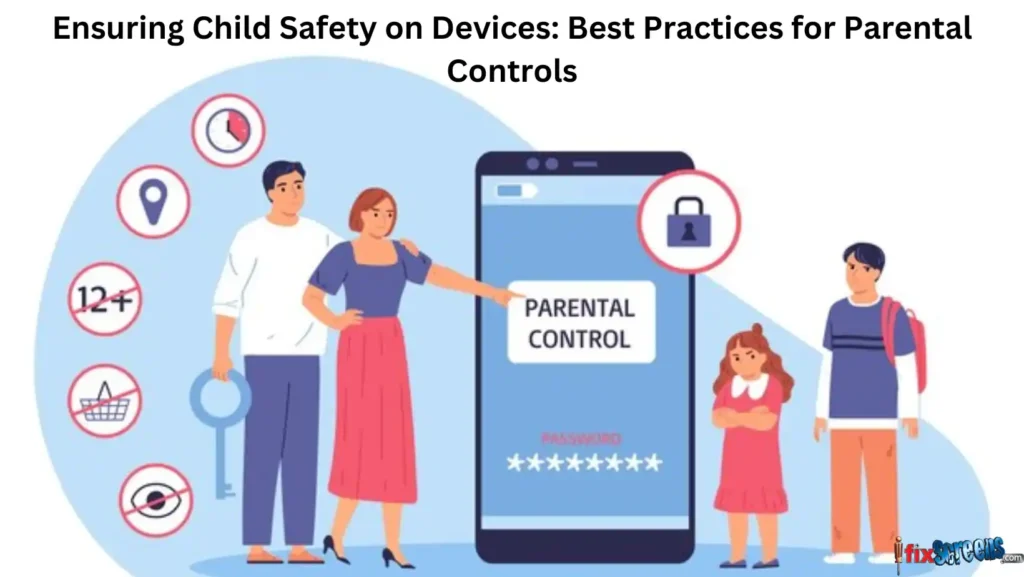Introduction
today’s digital age, blocking porn online has become a crucial task for parents. With easy access to explicit material on various devices, it’s vital to establish safeguards that protect children from inappropriate content. This guide will walk you through effective methods to restrict access to porn and ensure a safer online environment for your family.

Step 1: Implement a Reliable Content Filter
Content filters act as a first line of defense against adult websites. These internet filters can identify and block inappropriate material, making it easier for parents to manage online content.
Choosing the Right Filter
When selecting a content filtering solution, consider reputable options such as CleanBrowsing or Net Nanny. These services use DNS filtering to monitor and control internet traffic, allowing you to customize web filters according to your family’s needs.
Setting Up a Content Filter
- Select a filter: Choose software or services that offer comprehensive site-blocking techniques.
- Install and configure: Follow the provided instructions to set up the filter on your devices or network router. Configuring at the router level ensures all connected devices are protected.
- Test the filter: After installation, conduct tests by attempting to access known adult websites to ensure the filter effectively blocks them.
Step 2: Enable Safe Search Options
Many search engines and websites offer safe browsing solutions that help restrict access to explicit material. Enabling these options can significantly enhance your child’s protection.
How to Activate Safe Search
- Google: Go to settings in the Google Search page, select “Search settings,” and turn on the SafeSearch filter.
- YouTube: Access the settings within the YouTube app or website and enable Restricted Mode.
- Bing: Similar to Google, go to settings and enable SafeSearch.
By customizing security settings at the network level, you can force all users to access safe versions of these sites, further ensuring responsible internet use.
Step 3: Utilize Parental Control Features
Most operating systems come equipped with parental control software that helps manage online activities. These features allow you to filter inappropriate content and control screen time effectively.

Setting Up Restrictions
- Windows: Use Family Safety settings to limit screen time and restrict access to adult websites.
- macOS: Enable Parental Controls through System Preferences, allowing you to filter websites and monitor internet usage.
- iOS & Android: Both platforms offer built-in parental controls that let you restrict access to explicit content in apps and browsers.
By taking advantage of these built-in features, you can create a more secure browsing environment for your children.
Step 4: Disable Proxy and VPN Access
While filters and parental controls are essential, some kids might use VPNs or proxy sites to bypass restrictions. Understanding how to manage these tools is key to maintaining computer security.
Methods to Block VPNs
- Network Settings: Configure your router to block known VPN servers. Many routers allow you to view connected devices and identify unauthorized access.
- Monitor VPN Usage: Use internet monitoring tools to keep track of unusual activities on your network.
By disabling proxy and VPN access, you can better control online exposure and prevent access to explicit material.
Step 5: Be Cautious with Social Media Platforms
Social media can be a gateway for inappropriate content. While some platforms provide advanced parental controls, others do not. It’s essential to understand the risks involved.
Monitoring and Limiting Access
- Set Age Restrictions: Most platforms like Facebook and Instagram allow you to customize privacy settings for younger users.
- Educate About Risks: Discuss the dangers of sharing personal information and encountering inappropriate content online.
Implementing screen time management practices will help keep your child engaged in safe online environments.
Step 6: Manage Mobile Device Usage
Mobile devices offer unparalleled flexibility but can also expose children to harmful content. Leveraging parental control applications is vital.
Parental Controls on Mobile Devices
- iOS: Navigate to Settings > Screen Time and enable restrictions for explicit content.
- Android: Use Google Play Family Link to monitor app downloads and restrict certain content.
By establishing secure browsing settings, you can help your child navigate the online world safely.
Step 7: Create Strong Passwords for Protection
Weak passwords can compromise your family’s online safety. Encouraging strong password practices is essential.
Tips for Password Creation
- Complexity: Use a mix of letters, numbers, and special characters.
- Length: Aim for passwords that are at least 12 characters long.
- Uniqueness: Avoid reusing passwords across different accounts.
By using strong passwords, you can enhance digital wellbeing and protect your family’s online activities.
Step 8: Proactively Monitor Online Activity
Regularly monitoring your child’s internet usage helps you stay informed about their online interactions.
Tools for Monitoring Activity
- Software Solutions: Consider using applications like Qustodio or Norton Family, which offer comprehensive monitoring features.
- Manual Checks: Periodically review your child’s browsing history and app usage.
Keeping an eye on online behavior helps ensure that your children are engaging in safe browsing practices.
Step 9: Set an Online Schedule
Establishing a schedule for online activities can limit exposure to harmful content, particularly during late-night hours.
How to Create a Schedule
- Use Built-In Features: Most devices allow you to set screen time limits.
- Create Family Rules: Discuss and establish rules around device usage, especially during homework and family time.
By implementing an online schedule, you can promote responsible internet use within your household.
Step 10: Stay Informed and Educate Yourself
The digital landscape is constantly evolving, and staying updated on trends and tools is crucial for effective child protection.
Resources for Parents
- Websites and Forums: Explore platforms like Protect Young Eyes for insights on online safety.
- Books and Articles: Read up on the latest developments in child protection software and safe browsing.
Engaging in conversations with your children about their online experiences fosters a supportive environment and encourages open dialogue.
Conclusion
Blocking porn online and creating a safe digital environment for your children is a multifaceted task that requires dedication and awareness. By implementing these ten steps—utilizing content filters, enabling safe search options, and leveraging parental controls—you can significantly reduce the risk of exposure to inappropriate material. Stay proactive, communicate openly with your children, and continually educate yourself about new online safety practices. Together, we can create a secure and nurturing online experience for the next generation.
boost your business with the help of guest posting contact now (contact form link)
